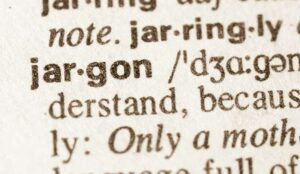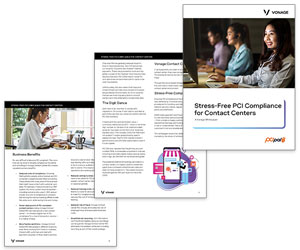Vonage explores the critical differences between call transferring and call forwarding, and shows you exactly how to handle every type of transfer, warm or cold, on any device, with clear steps and professional etiquette that keeps customers happy and teams aligned.
Transferring a call might sound simple – press a button and send it to the right person.
But in practice, especially in a business setting, it’s an art backed by clear processes, etiquette, and the right technology.
Find the difference between call transferring and call forwarding, when to use warm vs. cold transfers, step-by-step transfer instructions by device (including landlines, office or desktop phones, mobile, and VOIP Systems), and professional etiquette that turns routine calls into excellent customer experiences.
Why Effective Call Transferring Matters For Your Business
In fast-moving organizations, every call is an opportunity, to solve a problem, retain a customer, or close a deal. But when calls are mishandled, transferred to the wrong person, or dropped mid-transfer, the impact is immediate: frustrated customers, wasted time, lost revenue, and damaged credibility.
Many Businesses Struggle With Call Transferring:
- Teams don’t know who’s available or best suited to take a call.
- Employees aren’t trained on warm vs. cold transfers.
- Legacy phone systems lack visibility or flexibility.
- Callers get passed around or sent to voicemail with no explanation.
These breakdowns can make even the most capable business seem disorganized.
By contrast, efficient call transferring can improve every aspect of communication:
- Reduces call handling times by routing customers to the right person faster
- Prevents repetitive conversations by briefing teammates before handoffs
- Improves customer satisfaction by eliminating frustration and confusion
- Enhances team productivity by streamlining internal communication
- Demonstrates professionalism and builds trust with every interaction
The good news? With the right training and the right tools, your team can master call transferring and turn every call into a smooth, successful experience.
Call Transferring vs. Call Forwarding
Before we dive into the how, let’s define call transferring vs call forwarding:
- Call transferring happens during a live call. You answer the call, determine it needs to go to someone else, press a transfer button, and either speak to the next rep first (warm transfer) or immediately send it along (cold transfer).
- Call forwarding happens before the phone is answered. It automatically reroutes incoming calls to another number, such as your mobile phone or a backup line, so no manual handoff is involved.
Why Transfer a Call?
Transferring a call ensures your customers get the help they need from the right person, as quickly and smoothly as possible.
Here’s what makes a good transfer valuable:
- Direct help – Sometimes, the person who received the call just isn’t the right fit for solving a problem. Transferring the call to someone with the right expertise gets the issue handled faster.
- Better customer experience – Customers don’t like being put on hold forever or talking to multiple people. A well-managed transfer makes the process feel seamless and professional.
- Save time – Instead of making the caller repeat their story multiple times, a smooth transfer saves everyone’s time and keeps the conversation efficient.
- Build relationships – Proper call transfers show that your business is organized and customer-focused, which helps build trust and loyalty with your callers.
Benefits of Transferring a Call
Transferring calls might seem like a routine task, but when done right, it brings meaningful advantages to your business and your callers:
Gets the Caller to the Right Person
When you transfer a call, you ensure the caller reaches someone who can effectively assist them. This means they receive the correct information or solution without unnecessary redirections.
Cuts Down on Repeating Stories
Transferring a call to someone already prepped on the issue saves the caller from having to repeat their entire story. This streamlines the process and reduces frustration for the caller.
Makes Customers Happier
Getting to the right person quickly makes callers feel valued and taken care of. Satisfied customers are more likely to return and recommend your services to others.
Keeps Your Business Organized
Transferring calls helps keep everything running smoothly by sending calls to the right departments. It means everyone’s doing their job, and no one’s getting overwhelmed.
Warm Transfer vs. Cold Transfer
There are two main ways you can transfer calls – either as a warm transfer or a cold transfer. Here’s what they both mean:
What is a Warm Transfer?
A warm transfer just means you introduce the caller to the person you’re transferring them to.
When you receive a call, you first speak with the caller to determine if they need to be transferred to another person.
If a transfer is necessary, you place the caller on hold. While they’re on hold, you contact the person who should take over the call to check their availability.
During this time, you can provide a brief overview of the caller, including their name, the company they are calling from, and the purpose of their call. If the recipient is available and ready, you then transfer the call to their extension.
Use Warm Transfers When:
- The caller already shared important context.
- The next rep needs to be prepped.
- You want to provide a high-touch customer experience.
What is a Cold Transfer?
A cold transfer, also known as a “blind transfer,” is when you send the call directly to someone else without checking their availability.
Cold transfers are faster and easier for you. Just press the transfer button and off it goes. But there are some drawbacks. The caller may need to repeatedly explain their issue to different people, which can be frustrating.
Another problem with cold transfers is if the call goes to someone who isn’t available, the caller might end up in voicemail.
Nobody likes leaving a voicemail when they need help right now. This can make customers pretty unhappy and give your business a bad reputation.
Use Cold Transfers When:
- You don’t need to explain the context.
- You’re routing to a general line or team.
- Speed is more important than personalization.
How to Transfer a Call (General Steps)
Now that we’ve covered the different ways to transfer calls, let’s get into the nuts and bolts of how to actually do it.
The exact steps will vary depending on your call centre system, but the general process is pretty similar no matter what platform you’re using.
Here’s how to transfer a call, no matter your device:
- Answer the call.
- Inform the caller that you’ll be transferring them.
- Initiate the transfer using the button labeled “Transfer,” “Xfer,” or an arrow icon.
- Dial the recipient’s extension or phone number.
- Choose the transfer type:
- Cold transfer: Press Transfer again immediately.
- Warm transfer: Wait for the recipient to answer, give context, then complete the transfer.
How to Transfer a Call on Different Devices
Office or Desk Phones (e.g., Polycom)
- Press Transfer.
- Dial the number.
- Speak first (warm) or press Transfer again (cold).
Landlines
- Press Hold or Transfer.
- Dial the extension or external phone number of person you want to transfer the call to.
- Announce the call if needed. If you want to do an attended transfer (a warm transfer), wait for the recipient to answer; once they pick up, let them know who is calling and provide any necessary context.
- If you’re doing a blind transfer, simply press the Transfer button again after dialling the recipient’s number.
Mobile Phones
Transferring a call on a cell phone typically involves using the phone’s built-in call management features. The process may vary slightly depending on the make and model of your phone, as well as your carrier.
- Tap Add Call, Merge Calls or or use a built-in transfer option.
- Dial the recipient.
- Merge or complete the transfer (if available).
This blog post has been re-published by kind permission of Vonage – View the Original Article
For more information about Vonage - visit the Vonage Website
Call Centre Helper is not responsible for the content of these guest blog posts. The opinions expressed in this article are those of the author, and do not necessarily reflect those of Call Centre Helper.
Author: Vonage
Reviewed by: Robyn Coppell
Published On: 9th Sep 2025
Read more about - Guest Blogs, Vonage






 Vonage is redefining business communications, helping enterprises use fully-integrated unified communications, contact centre and programmable communications solutions via APIs.
Vonage is redefining business communications, helping enterprises use fully-integrated unified communications, contact centre and programmable communications solutions via APIs. 


































